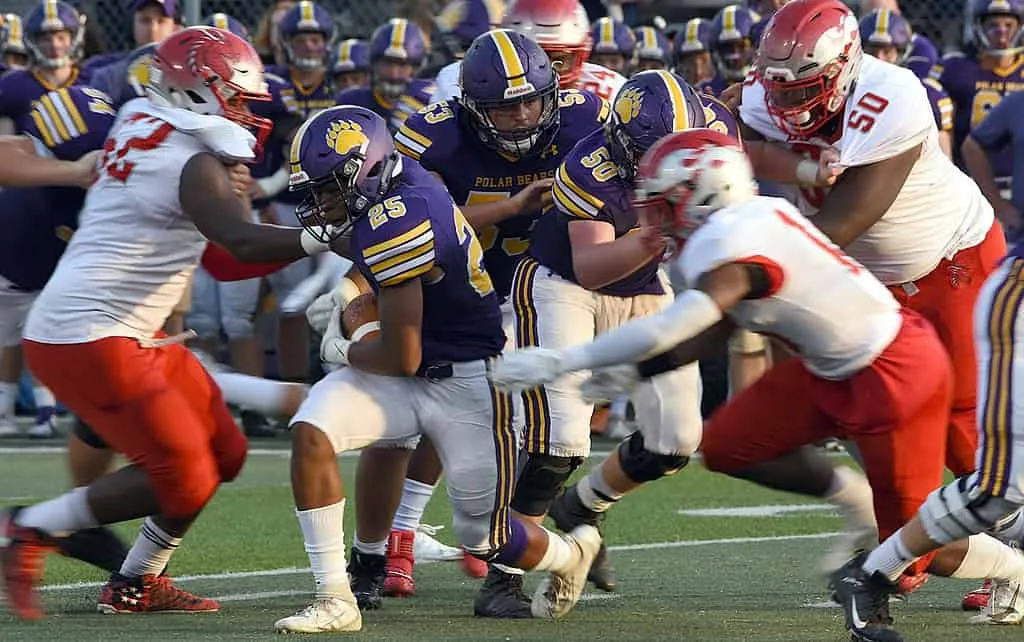Ever found yourself watching a soccer match, eyes glued to the television screen as players dart back and forth across the field, and thought, “Just how far are they running?”
It’s an interesting question, isn’t it? And the answer might astound you. The average miles run in a soccer game is about 7 miles.
You see, a soccer player isn’t just going for a gentle amble or a leisurely jog around the park. Oh no, it’s much more intense than that.

These athletes, with their formidable endurance and relentless stamina, are running distances that could put even dedicated long-distance runners to the test.
To put it into perspective, it’s not just a few laps around the block. In a single game, these players are covering distances comparable to a half marathon.
And they’re doing this in cleats, on a grassy field, while strategically maneuvering a ball and outsmarting opponents. It’s like running a race, playing chess, and performing ballet all at the same time!
So, next time you watch a game, take a moment to appreciate the tremendous physical demands of the sport. When it comes to stamina and endurance, these soccer players are truly in a league of their own.
Average Distance Covered: Miles Players Run In A Game?
From the impenetrable goalkeeper to the sprightly striker, each player has a unique running regime that contributes to the overall soccer game.
The average miles run in a soccer game varies depending on fundamental and tactical factors.
The goalkeeper, the citadel of the team, paradoxically covers the least distance in the 90 minutes of play. With about 1.25 miles per game, their steps are more about strategic positioning than long sprints.

Like a game of chess, it’s all about anticipation and tactics.
The defenders, fondly known as the team’s backbone, clock in an average of 6 miles run in a game. Imagine running back and forth across the Golden Gate Bridge!
These unsung heroes often do not get the recognition they deserve.
Midfield players, the team’s heart, really rack up the miles. Averaging between 7 to 9 miles a game, they’re like your neighborhood mail carrier, constantly on the go.
Notably, central midfielders may run even more than outfield players, tirelessly bridging the gap between defense and attack.
The Sprinting Prowess of Professional Soccer Players
Soccer isn’t just about the distance covered; it’s also about the intensity. Just like a cheetah chasing its prey, soccer players often have to engage in rapid sprints.

And when it comes to sprinting, professional soccer players are second to none. It’s not unusual for a player to make a 45 to 90-second sprint, covering a good chunk of the soccer field. Imagine Usain Bolt running at full tilt for that long!
The Standout Performances at World Cup 2022
Flashback to the 2022 World Cup, when players were running circles around one another. Some of the world’s best athletes ran over 10 miles in a single match. That’s like running from the Statue of Liberty to Central Park and back!
Among them, the central defenders stood out. They might not make the headlines as often, but they sure were omnipresent on the pitch. Talk about dedication!”
The Average Miles Run in a Soccer Game Compared to Other Sports?
When we compare the distances covered in different sports, the disparity becomes quite evident. For instance, in American football, an average player covers just over 1 mile in a game.
This distance is primarily covered in short, intense bursts of speed and power, rather than continuous running.

The receivers and cornerbacks, who are often the most mobile players on the field, might reach up to 1.5 miles in a game. This is due to their role which requires them to cover large portions of the field in response to the game’s flow.
Now, compare this to the distances covered in a single match of soccer during the World Cup, where players can run over 10 miles.
The difference is stark. It’s like comparing a leisurely stroll around your local supermarket to a dash through a bustling farmers market. In the supermarket, you might meander through the aisles, stopping occasionally to check items.

But in a farmers market, you’re constantly on the move, navigating through crowds, darting from one stall to another, and covering a lot more ground in the process.
This comparison not only highlights the physical demands of different sports but also underscores the unique skills and endurance required by soccer players.
Their ability to maintain a high level of performance while covering such large distances is a testament to their exceptional fitness and dedication to the sport.
The Evolution of Distance Covered in Soccer
Developments in technology have made tracking player distances incredibly efficient. Remember the days when we had to guess how much ground a player covered? It was like trying to count the number of jelly beans in a jar.
Now, with advancements like GPS and motion tracking, we know that players don’t just run. They sprint, they jog, they sidestep, they backpedal, and they essentially engage in a 90-minute dynamic workout.

Think of it as a mix of a high-intensity interval workout and a cross-country race but with a soccer ball!
The next time you see your favorite player dashing across the screen, remember they’re doing more than just playing soccer.
They’re running the equivalent of a good chunk of a marathon, showcasing a blend of endurance and intense sprinting rarely seen in other sports.
Truly, soccer is a game that requires a unique combination of skills, fitness, and a whole lot of running!
